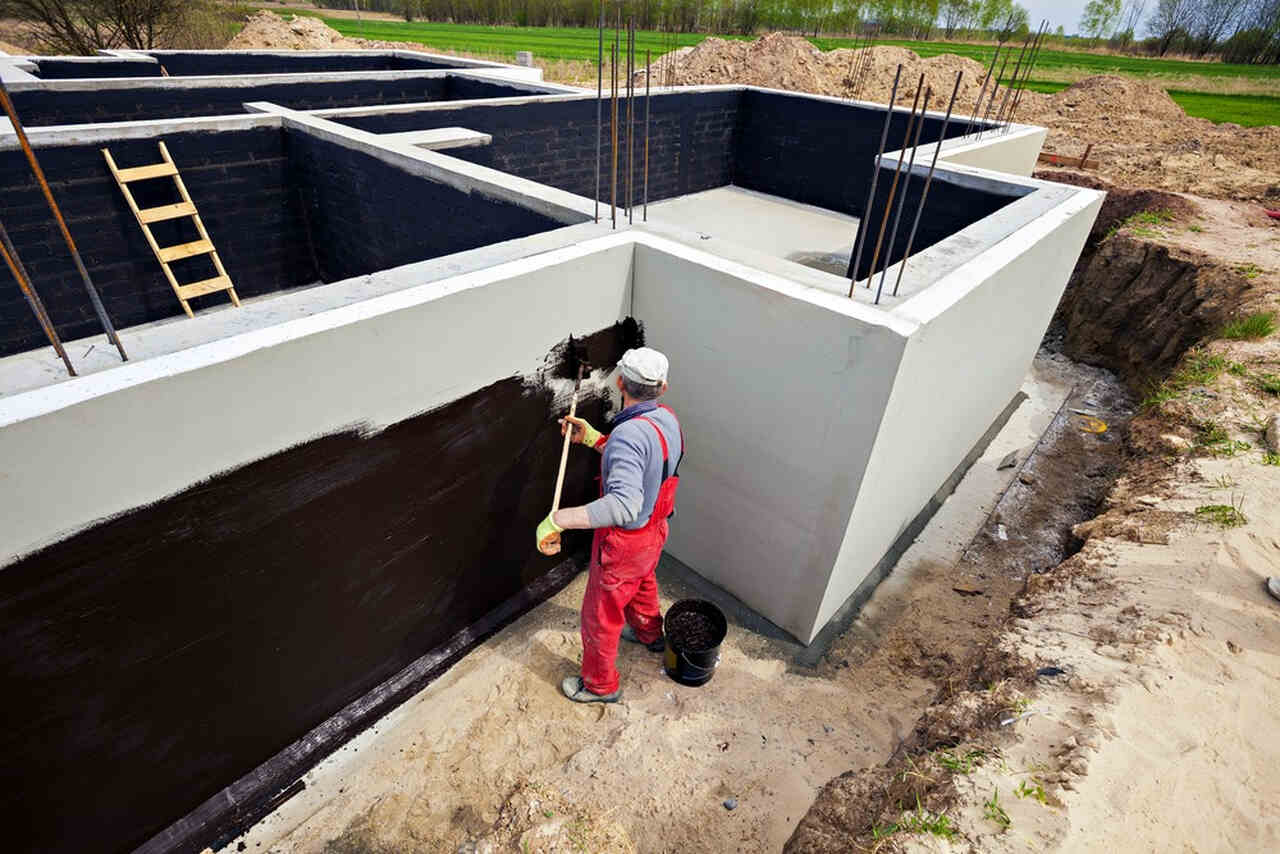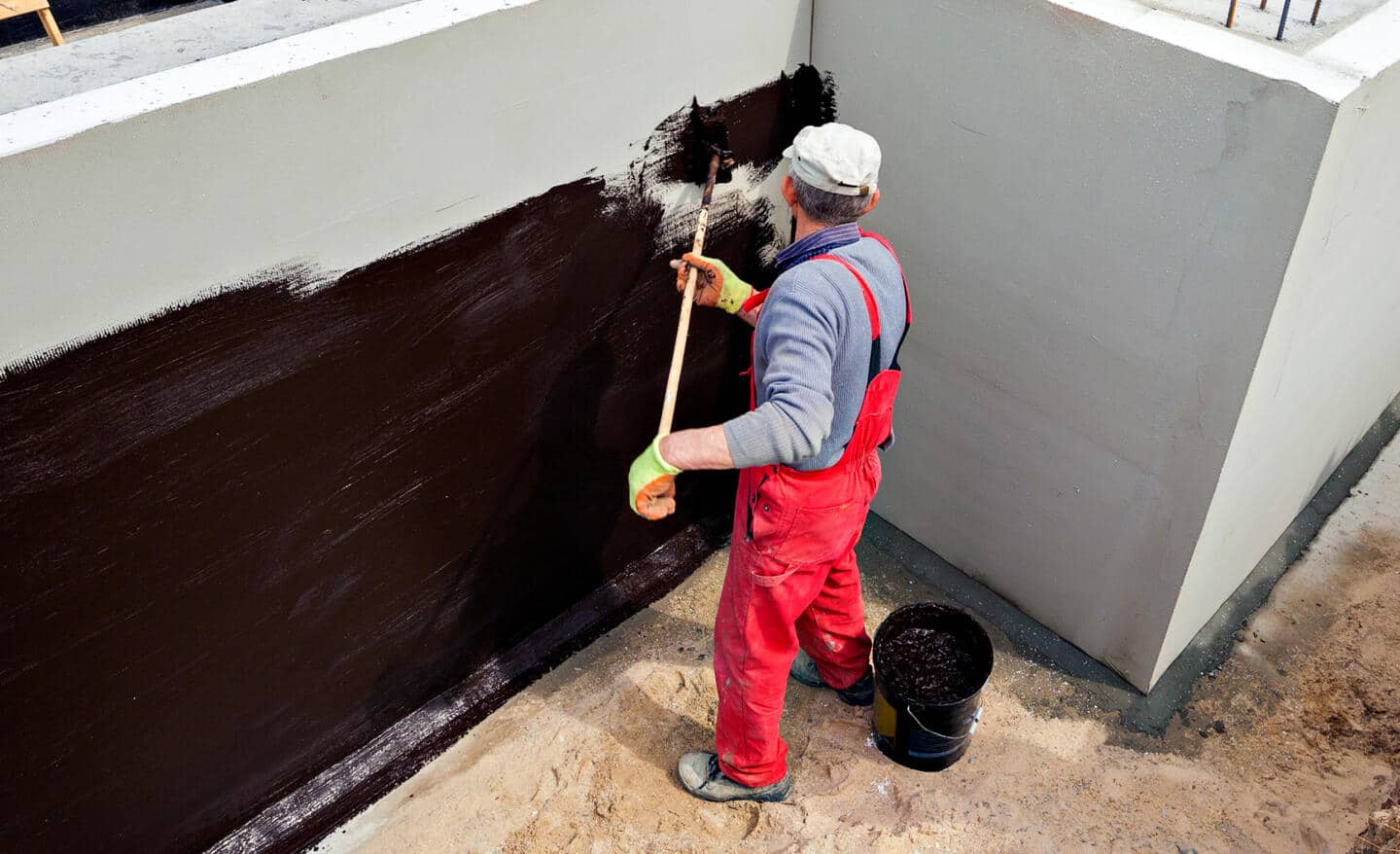Just How Waterproofing Functions: A Thorough Appearance at Strategies and Technologies
Waterproofing is vital for shielding frameworks from moisture-related damage. It involves different methods and technologies that produce barriers against water intrusion. Conventional methods, such as compressed clay, coexist with contemporary developments like liquid-applied membrane layers. Comprehending the subtleties of these techniques is essential for effective application. Nonetheless, the efficiency of any kind of waterproofing option pivots not just on the techniques utilized however likewise on recurring upkeep and examination. What are the vital variables that influence long-term performance?
Understanding the Essentials of Waterproofing
Waterproofing is a necessary procedure that protects structures from water invasion, which can bring about substantial damage gradually. This method entails the application of numerous products and strategies made to produce an obstacle versus dampness. The main goal is to avoid water from penetrating surface areas, which can cause wear and tear, mold growth, and architectural instability.Various aspects influence the choice of waterproofing method, consisting of the kind of framework, its area, and ecological conditions. Comprehending the physics of water motion and the buildings of different products is critical in choosing a reliable waterproofing solution.Effective waterproofing not just safeguards buildings but additionally boosts their long life and stability. Commonly, it is integrated into the style phase of construction to ensure complete defense. As awareness of water-related problems expands, the significance of comprehending waterproofing fundamentals comes to be progressively clear to engineers, building contractors, and homeowner alike.
Standard Waterproofing Approaches
Traditional waterproofing methods have actually been used for centuries, counting on reliable strategies and materials to secure frameworks from water damages. Among the oldest approaches includes the use of clay, which, when compacted, creates an all-natural obstacle versus wetness. Furthermore, bitumen, a sticky, black material stemmed from oil, has actually been utilized for its water-resistant homes, usually put on roofs and foundations.Another technique includes the application of lime-based plasters, which give a breathable layer that permits moisture to run away while stopping water access. Thatch roof, a conventional technique still seen in some cultures, uses superb waterproofing because of its tightly loaded straw layers.Moreover, making use of stone and brick has been prominent, as these materials are inherently immune to water when correctly mounted. In general, conventional waterproofing methods emphasize the value of picking proper products and construction methods to enhance resilience versus water intrusion.
Modern Waterproofing Technologies
Advancements in modern-day waterproofing innovations have actually reinvented the way structures are shielded from water damage. Ingenious strategies such as liquid-applied membranes and sophisticated sealants have enhanced the efficiency and adaptability of waterproofing solutions. These technologies allow for seamless application, decreasing the threat of leakages and making sure thorough coverage over complicated surfaces.Moreover, the assimilation of smart modern technologies, such as dampness sensors and automated surveillance systems, makes it possible for real-time analysis of waterproofing performance. This aggressive method promotes prompt upkeep and reduces long-term fixing costs.Additionally, advancements in spray-applied coatings use quick application and excellent attachment, adjusting to various substratums while giving robust protection. Techniques like polymer-modified systems additionally boost versatility and sturdiness, making them ideal for varied environments. On the whole, modern-day waterproofing technologies not only alleviate water invasion but also add to the longevity and sustainability of structures, noting a substantial shift in the market.
Products Used in Waterproofing
The effectiveness of waterproofing remedies greatly depends on the products made use of in their application. Different products are utilized to produce obstacles against water access, each with unique properties matched for various environments. Frequently utilized materials consist of membrane layers, coatings, and sealants.Liquid-applied membranes, often made from polyurethane or acrylic, form a smooth obstacle that adapts to complex surface areas. Sheet membrane layers, commonly created from rubber or polycarbonate, offer longevity and are perfect for larger locations. In addition, cementitious waterproofing materials, made up of cementitious substances, supply excellent bond and flexibility.Sealants made from silicone or polyurethane are essential for joints and seams, making sure extensive security. Furthermore, sophisticated materials, such as geo-composite membrane layers, integrate numerous features, boosting efficiency. Generally, the choice of waterproofing products is crucial in achieving durable and reliable water resistance, tailored to details job requirements and environmental conditions.
Common Applications of Waterproofing
Waterproofing plays an essential function in various fields, making certain the long life and integrity of structures. Common applications consist of property options that safeguard homes, industrial facilities that safeguards services, and industrial settings that call for robust defense against dampness. Recognizing these applications highlights the significance of waterproofing in maintaining both safety and functionality across various settings.
Residential Waterproofing Solutions
Many home owners deal with obstacles with dampness invasion, making reliable property waterproofing remedies important. Numerous methods exist to resolve this problem, including exterior and interior waterproofing systems. Inside solutions usually include the application of sealants and coatings to cellar walls, which aid avoid water seepage. Outside approaches usually consist of the installation of drainage systems and waterproof membrane layers that draw away water far from the foundation.Additionally, home owners may take into consideration sump pumps to get rid of water build-up and dehumidifiers to regulate humidity levels. Correct grading and the use of gutters additionally play an important function in managing water circulation around the home. By carrying waterproof cement showers out these approaches, homeowners can greatly reduce the danger of water damages and mold development, making sure a dry and secure living atmosphere.

Business Framework Defense
Reliable waterproofing solutions play a vital function in the security of industrial framework. Yard drainage Omaha. These strategies are crucial for safeguarding structures, parking structures, and bridges from water damage, which can compromise structural honesty and bring about pricey fixings. Usual applications consist of the installment of membrane layers, layers, and sealers that develop obstacles against moisture infiltration. Locations such as cellars, roof coverings, and outside walls are typically prioritized to ensure durability and sturdiness. Furthermore, waterproofing systems can improve energy effectiveness by avoiding water-related issues that may result in mold and mildew development and damage. By carrying out durable waterproofing procedures, homeowner can secure their financial investments and keep functional effectiveness, eventually adding to the general sustainability of commercial facilities
Industrial Applications Overview
While numerous markets deal with distinct challenges, the requirement for trusted waterproofing options remains a consistent in commercial applications. Industries such as production, building, and energy usually encounter atmospheres where moisture exposure can endanger structural stability and functional effectiveness. In producing centers, waterproofing is important for shielding equipment and products from water damage. In construction, it safeguards foundations and basements versus groundwater seepage. The power market counts on waterproofing for the defense of devices in hydroelectric plants and overseas structures. Furthermore, food processing industries utilize waterproofing to assure health and conformity with security standards. Overall, effective waterproofing solutions are essential for boosting durability, safety and security, and performance throughout different industrial setups.
Upkeep and Durability of Waterproofing Solutions
Although waterproofing services are designed to offer lasting security against moisture breach, normal upkeep is vital to guarantee their performance and durability - Water Solutions. Routine examinations play a considerable duty in determining possible problems such as splits, peeling, or indicators of water damage. Resolving these issues without delay can avoid more wear and tear and pricey repairs.Additionally, cleaning up the surface area of waterproofed locations aids remove dust and debris that could endanger the honesty of the waterproofing barrier. It's additionally recommended to reapply safety coverings or sealants as advised by makers to keep perfect efficiency. Ecological factors, such as UV exposure and extreme climate problems, can impact the life expectancy of waterproofing products, making normal assessment important
Often Asked Inquiries
Can Waterproofing Be Applied in Winter?
The question of applying waterproofing in winter elevates problems concerning adhesion and curing. Numerous items might not do at their ideal in reduced temperature levels, necessitating careful selection and consideration of particular guidelines for efficient application.
How Much Time Does Waterproofing Typically Last?
The duration of waterproofing effectiveness varies based upon materials and environmental elements. Typically, it can last from five to 10 years, however routine maintenance and evaluations are like this vital to ensure peak performance and durability.
Is DIY Waterproofing Effective and Safe?
The effectiveness and safety of DIY waterproofing depend on various factors, consisting of worldly high quality and application technique. While some individuals achieve satisfying results, others may run into concerns that endanger long-lasting security and structural honesty.
What Are the Indicators of Failing Waterproofing?
Indicators of stopping working waterproofing include noticeable water spots, peeling paint, mold development, stuffy smells, and moisture in walls or ceilings - Drainage & waterproofing company Omaha. These indications recommend compromised barriers, necessitating punctual assessment and prospective remediation to pop over here stop more damages
How Do I Choose the Right Waterproofing Contractor?
